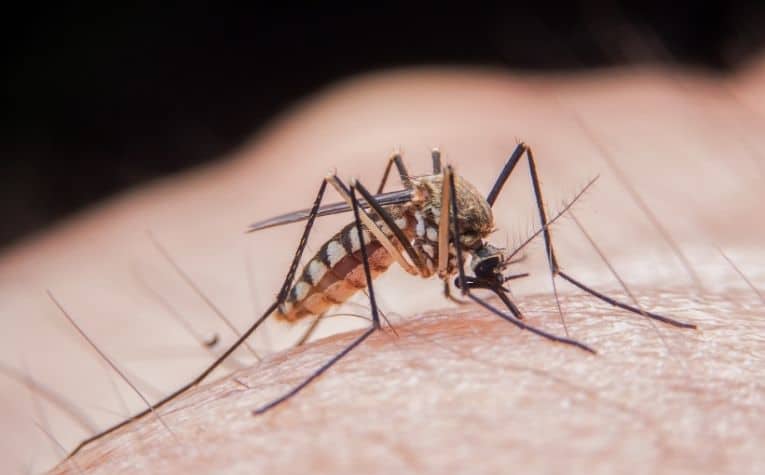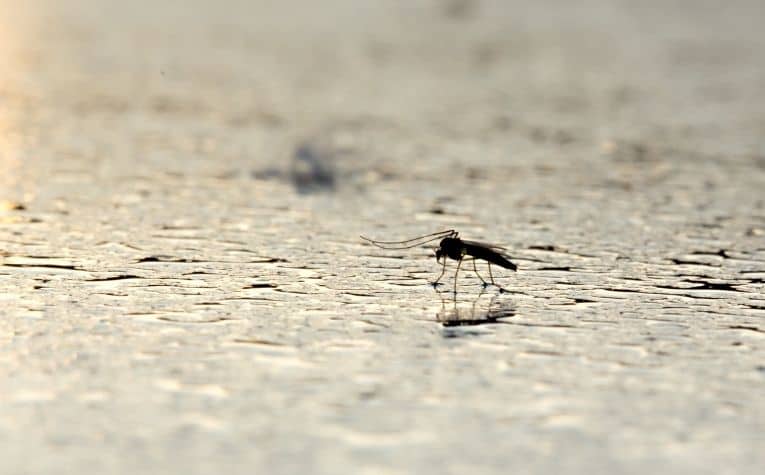Who doesn’t want to visit Norway? The Scandinavian nation is one of the most beautiful countries in the world. Norway is known, in part, for its wintery weather and snow-covered landscapes.
Yet many travelers are curious to know: Does Norway have mosquitos?
There are mosquitos in Norway. To what extent the bothersome insects will negatively affect a person who seeks to avoid them depends on where they travel in Norway and the time of year they visit.
A little knowledge and a little preparation will help ensure mosquito-dodgers a comfortable visit in Norway.
The mosquitoes in Norway don’t have to negatively impact visitors. Having a general awareness of where they are and when they are active will prevent many bad experiences.
Being well-prepared with preventative measures will go a long way as well.
Norwegians have interesting customs. See Why Do Norwegians Have Lights in Their Windows? to learn more.

Where are the mosquitos in Norway?
Mosquitos impact certain areas of Norway more than others, so it may be good for a traveler to know about these places in order to avoid them.
- Where? The most prominent area for mosquitos in Norway is the interior plains in the northern part of the country. Mosquitoes swarm in this region, and travelers are likely to encounter them.
- When? Mosquitos in Norway are particularly active during the warmest months of the year. Like other places in the world, it’s not common to encounter mosquitoes during the coldest months of the year.
Even if a visitor is traveling to a place in Norway that has a high population of mosquitos at the insects’ peak time of activity, taking preventive measures will help a person have a good experience and not return from their journeys uncomfortably itchy.
Mosquitos love standing water
Norway has an abundance of one thing that mosquitos love: water. The pesky insects love standing water.
It’s common at certain times of the year to find mosquito swarms and the eggs that they lay in, and around bodies of water, like ponds and lakes.
Do I Need To Worry About Mosquitos While In Norway?
Even people who don’t have a unique sensitivity to the blood-sucking insects would rather not be itching red bumps all over their bodies as they ski Norway’s mountains, sail its rivers, and visit its historical sites and museums.
Though not dangerous to most people, mosquito bites can still ruin an otherwise nice day, so many people seek to avoid them.
Don’t mosquitos transmit diseases?
One way mosquitos can be dangerous to people is when they carry diseases like malaria. Most of these kinds of threats exist in the Southern Hemisphere, not in northern Europe or Norway.
Though weather patterns can vary in a certain region, Norway’s climate generally doesn’t support the conditions necessary for disease-carrying mosquitos:
“In order for a mosquito to transmit a disease to the host, there must be favorable conditions, referred to as transmission seasonality. Seasonal factors that impact the prevalence of mosquitos and mosquito-borne diseases are primarily humidity, temperature, and precipitation.” [1]
Are Mosquitos In Norway A Threat?
The mosquitos in Norway may not carry any deadly diseases, but a visitor may be fairly miserable if they aren’t adequately prepared.
Planning ahead and getting the right tools and equipment can help a person have a great and comfortable time in Norway.
What is life like in Norway? See Can You Live in Norway Without Speaking Norwegian? to learn more.

How To Deal With Mosquitos In Norway
The suggestions below provide some easy tips to help people to manage the mosquitos in Norway:
- Know what to expect: Do some research on wherever you’re planning to travel to in Norway. Find out what the area is like for mosquitos and other pests during that particular time of the year. Knowing what to expect can make it easier to plan. You also won’t be overwhelmed by an admittedly very pervasive pest.
- Cover up as much as possible: If you’re planning to be outdoors in a part of Norway with a high mosquito population at that point in the year, make sure to keep as much skin covered as possible. This can be challenging in warmer weather, but try your best nonetheless. Long sleeves made from highly breathable materials are always going to be a good idea.
- Bring your insect repellant: Products containing DEET are easy to find in stores just about anywhere with a mosquito problem. Proven products with a track record for keeping people protected are what you’re going to want.
- Consider some mosquito nets: These can be a pain to bring with you, but look for some in the area, if the opportunity should come up. These are easy to assemble, and they can provide protection in situations where your dwellings are perhaps not as sealed off from their influence as you would like.
- Consider mosquito patches: These are far more effective than they sometimes get credit for. You will likely be able to find some wherever you happen to be in Norway. If you want to pack this, or anything else we’ve mentioned, before leaving, please feel free to. Just make sure it’s something you are safely allowed to bring with you on the plane.
What places in the world have no mosquitos?
By the way, in case you were wondering, below is a list of places in the world with no mosquitos and none of the countries are near Norway:
- Antarctica: Antarctica is the earth’s southernmost continent. The region contains the South Pole and is situated in the Antarctic area of the Southern Hemisphere, almost entirely south of the Antarctic Circle, and is surrounded by the Southern Ocean. It doesn’t possess any of the necessary environmental factors to sustain mosquito life.
- French Polynesia: French Polynesia is an archipelago of the French Republic. It is made up of 118 islands and atolls stretching over an expanse of more than 2,000 kilometers (1,200 mi) in the South Pacific Ocean.
- Iceland: Iceland is generally considered a Scandinavian country, which lies in the North Atlantic ocean. It has a population of 364,134 and an area of 103,000 km2 (40,000 sq mi). The capital and largest city is Reykjavík.
- New Caledonia: New Caledonia is located in the southwest Pacific Ocean, to the south, about 1,210 km (750 mi) east of Australia and 17,000 km (11,000 mi) from Metropolitan France. The archipelago is part of the Melanesia subregion.
- Seychelles: Seychelles is an archipelagic island country in the Indian Ocean at the eastern edge of the Somali Sea. The country consists of 115 islands. Its capital and largest city, Victoria, lies 1,500 kilometers (932 mi) east of mainland Africa.
Planning a visit to Norway? See Is Tap Water Safe to Drink in Norway? to learn more.
Conclusion
Yes, there are mosquitos in Norway. No, they don’t have to ruin a person’s visit.
The mosquitos to be found throughout Norway are harmless, as was mentioned above. They are simply a nuisance.
Also, at the end of the day, no one wants to get eaten alive by these pests.
No one wants to be left with tons of itchy bug bites. This is particularly true when you’re exploring a destination as varied and stunning as Norway.
With a little planning, you won’t have to be concerned. If at all possible, and you don’t mind going when the weather has cooled down to a certain extent, try to visit Norway during a time of the year in which they aren’t going to be as much of a problem.
Enjoy yourself and stay covered out there in Norway!
